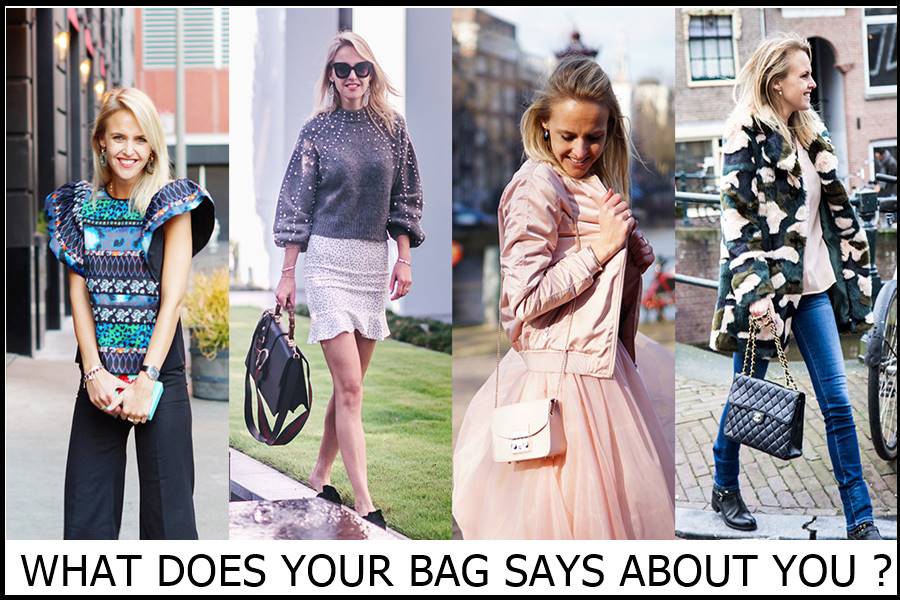How to take clothes photos: the 7-step guide 2022
How to take clothes photos: the 7-step guide 2022
Attractive and quality product photos greatly influence consumer decisions, mainly if you sell clothing on your online store. Indeed, when you photograph clothes, you have to seduce your customers and accompany them in their projection. For this, you can, for example, show the product on a mannequin, zoom in on the material and the color, or even show the product worn by human models of different sizes.
Fortunately, you don’t have to spend a fortune to take great photos and sell your clothes. A little material, a few tricks, and the will are enough to start. Over time, you will accumulate experience and become more productive during your photo shoots.
If you are ready to get into product photography and want to learn how to take great photos of clothes, follow these seven steps and take advantage of our experience to make your photo shoot a success, even on a small budget.
Free guide: How to take photos of your products yourself
Learn how to take great photos of your products without spending a fortune with our free guide.
Download the free guide
Get your clothes ready
Before you start your photo shoot, it’s essential to prepare your clothes to look their best. Indeed, it is common to have clothes that are a little wrinkled, with stains, lint, or manufacturing defects… including on new items.
Although preparing the clothes for the photo shoot is crucial, many photographers do not give it importance and use Photoshop to correct imperfections (stains, creases, and other visible defects). Don’t make the same mistake. Photoshop is not a magic tool, and mastering advanced photo editing techniques takes time, not to mention that the photo editing process can sometimes compromise the image quality.
To avoid complex and time-consuming retouching on Photoshop or other photo editing software, make sure that the clothes you are going to photograph are as beautiful as possible and use your retouching software only to make final touch-ups and correct the colorimetry.
Ironing will significantly improve the appearance of your garment in the photo.
Thoroughly examine your item inside and out. Are there any labels, stickers, or other branding elements that need to be removed? Remove them if there are any. Has the garment creased or creased during storage? Iron it. Fix flaws and remove distracting elements; for example, use lint rollers or masking tape to remove dust and threads.
Set up your photo studio
With a few items and accessories, you can convert any room that has free space into a photography studio. If your budget is tiny, you can get by even using essential equipment; a camera, a white paper photo background, masking tape, and taking advantage of natural light. If you can afford to spend a little more money and want to be able to choose where you shoot, you should invest in additional equipment.
The layout of a photo studio with a camera, a tripod, a lighting stand, background support, a white paper background, a mannequin, and a lighting kit with a single light source.
If you’re shooting smaller items like jewelry, bags, wallets, or other accessories, you can get a mini portable photo studio; the Foldio ministudio, in particular, has several different backgrounds, LED lights, and even an Android app that can help you take professional product shots from the comfort of your home or office.
Bottom
Always use a gray or white background to eliminate distractions, and be sure to capture colors as accurately as possible. White paper photography backdrops are very suitable, inexpensive, and available at most photographic supply stores. Try getting a background stand, and hang your paper background on it, making sure to create a slight curve at the bottom to eliminate distracting shadows and creases, then tape it down to the floor ( see picture above).
Using a background stand will allow you more flexibility when choosing where to place your paper background and allow you to change locations in the studio when needed quickly. If your budget is tight, you can stick the paper background directly to the wall or ceiling without buying support.
Camera
The camera plays a vital role in the process; however, don’t make the mistake of assuming that this is the only element on which your success depends. Although it is one of the puzzle pieces, buying a device should not consume your entire budget. We recommend using a camera with at least manual aperture and exposure settings (e.g., SLR, mirrorless/hybrid, compact expert); however, you may prefer your smartphone’s least expensive option!
Use a tripod to stabilize the camera, eliminate camera shake, ensure consistency in your shots, and have your hands free to handle other tasks when needed. Although it is essential to use a tripod, there is no need to invest a lot of money in its purchase; make sure that it is stable and supports the weight of your equipment.
Place your camera and tripod in front of your item. To capture different angles, most of the time, it’s the item of clothing that you’ll be moving, not the camera.
How to take clothes photos: the 7-step guide 2022
Lighting
Natural light is a high-quality light source for any photographer. If you spot a large window through which plenty of natural light enters, that’s perfect! This could be quite enough if you have a few products. However, it’s not ideal if you have a large amount of product or need to run regular photo shoots, as you’ll struggle to get consistent light. We highly recommend investing in a continuous or flashlight kit if you can afford it.
Artificial lighting equipment will allow you to photograph clothes, regardless of weather and light conditions. This will increase your efficiency, and the lighting will help you get professional quality photos of your products.
For a lighting setup with only one artificial light source, you will need a light source (flash or continuous), a diffuser or shaper (e.g., softbox or photo umbrella), a lighting stand, and a reflector.
Photo studio equipment, especially flashes, is quite expensive, and the price may well exceed the value of your camera. We, therefore, recommend that you start with a continuous light source (fluorescent or LED), which is easier to use when you are just beginning.
A diffuser is also necessary to diffuse the light well, avoid “hot spots,” and thus obtain attractively and evenly lit product photos. The light stand will support your light source and diffuser, so you can place it where you want your product.
The reflector will be used to loosen the shadows a little to get as much light as possible on your product.
Free guide: How to take photos of your products yourself
Learn how to take great photos of your products without spending a fortune with our free guide.
Set up your lighting setup
If you plan to use natural daylight, place your product near a window so that it is evenly illuminated with soft light. If you’re using artificial lighting, here’s a schematic — from an overhead view — of a very efficient single-light lighting setup.
Place the light source and softbox at a 45-degree angle from the product horizontally and vertically.
Place the light source and softbox or umbrella at a 45-degree angle from the product so that it is softly and evenly illuminated. Your device must be located directly before the item is photographed. Placing your item too close to the bottom could generate shadow. If this happens, pull your item away from the paper background to get a pure white experience. If you have the possibility, adjust the power of your lighting to obtain a well-exposed product and a white background.
If you’ve opted for a continuous light source, exposing your photography will be much easier because you only need to use your camera’s light meter, which you can find by looking through the camera’s viewfinder and adjusting its parameters in such a way as to set them to 0 (zero). The process isn’t as simple when using flash lighting since the light only fires when the device fires. However, using a light meter will allow you to measure the amount of light quickly and accurately; by synchronizing it with the lighting system and placing it in front of the article to be photographed, you will be able to obtain exact measurements.
Suppose you don’t have a light meter; set your ISO between 100 and 250, your shutter speed to 1/200 or less, and your aperture to f/11. From there, shoot and adjust your camera settings as you go to achieve optimal exposure and focus. Note that with a flash, the ISO and the aperture of the diaphragm will mainly vary the light intensity received by the product, while the shutter speed will impact the lighting of the background. So to have a bright white experience, choose a slightly slower pace, around 1/60s – 1/80s, depending on your configuration.
How to take clothes photos: the 7-step guide 2022
Fit your garment on a store mannequin or hire an actual model
Patterns bring clothes to life and make it easier for consumers to protect themselves on how to wear or match a garment, but hiring professionals is expensive. An alternative is, therefore, to use store mannequins. Photographing a garment on a store mannequin is arguably the best way to present the garment’s shape and how it fits the body while encouraging customers to imagine themselves wearing it.
If you don’t have a dummy, you can also display your clothes flat, take photos of your clothes on a hanger, or use pictures shared by your customers.
Adjust your clothing properly
Take time to style your item on the mannequin; if the garment seems too big, pin or cinch it at the sides until it fits snugly.
Then position the model in the middle of your background and directly in front of where the camera will be.
You can create the invisible dummy effect during post-production processing.
If you think using a dummy might reduce the appeal of your item or distract customers, you can use the invisible dummy technique when processing in post-production. By taking multiple photos of each item, you can remove the dummy from product images and present a 3D image showing the garment’s shape and how it fits the body.
Configure your camera
If your camera settings aren’t configured correctly, even Photoshop’s most advanced editing techniques won’t be able to make your images look professional. Before photographing your products, ensure you understand specific settings like ISO, aperture, and white balance.
Pay special attention to ISO, aperture (f-stop), and white balance.
ISO
Make sure your ISO does not exceed 800 or 1600, depending on the devices. Higher ISOs produce “noise” or “graininess”; specks of gray or color give photographs a cinematic look. The higher the ISO, the more noise and the less sharp the image. A tripod will allow you to set the ISO to 100 or 200 for optimal clarity and sharpness.
Opening
The aperture, which is represented by the f-number of your camera settings (e.g., f/16, f/2.8), controls the depth of field. The higher the number, the greater the depth; therefore, the more detail in the image will be highlighted. Be sure to choose an aperture number greater than f/11 so that all aspects of your products are brought into sharp focus.
How to take clothes photos: the 7-step guide 2022
White balance
Have you ever looked at a photo and thought it was taken through a blue or orange filter? The white balance was probably not set correctly. Light sources have different temperatures, with some sometimes creating a “color cast” that the camera cannot identify as pure white. White balance controls how the camera interprets the colors it records. There are different types of light sources, the most common being: tungsten light, fluorescent light, LED light, and natural sunlight.
You can adjust your white balance based on the light source you’re using or allow the camera to configure this setting automatically. Don’t forget to change the white balance so you don’t have to calibrate your colors in post-production.
Photoshoot
Finally, the moment you’ve been waiting for has arrived! Point your camera at your story and press the shutter button to allow the camera to focus, then take the photo. Adjust camera settings as you shoot if you notice your images need to be brightened or darkened. Your adjustments will become more instinctive as you take more photos and gain experience.
Take photos of your item from all angles.
Take as many pictures as possible. You should also take photos of the front and back of the item, left and right sides, from 45-degree angles, without forgetting the other details. The more you shoot, the better. It’s helpful to have multiple product images to choose from for your final image; conversion tests have shown that displaying several photos of the same product on an e-commerce site increases sales. The product’s appeal will also be enhanced if it is supported by several photographs taken from different angles.
How to take clothes photos: the 7-step guide 2022
Post-production process
After you’ve finished the shoot, it’s time to optimize your product images for the web. Post-production processing aims to give your pictures a professional look while maintaining optimal performance.
This is an important step that should not be overlooked. Post-production is time-consuming work, so don’t hesitate to delegate this step to free up time to manage your online store. There is a multitude of online services to choose from. Since digital files are easily transferable, outsourcing this task will save you time and money.
If you prefer to handle this task yourself, you should follow a post-production process that deals with alignment, cropping, background removal, and color correction; to maintain a consistent and professional appearance. Keep track of these retouching processes to develop a predefined set of specifications for both shooting and post-production.
Alignment
Make sure all your items are the same size and centered in the image; all angles, corners, and edges must also be aligned (see the right image below). The easiest way to ensure accurate alignment is to create a spec set in a Photoshop template.
Perfectly aligned items give off a cohesive and attractive appearance.
Cropping
Just like alignment, you must crop your images the same way to give your customers a smooth online shopping experience. If you use fixed specifications for alignment, you will have no trouble cropping your photos or resizing them according to your website’s image publishing settings.
Bottom
We used a white background; this is a recommended practice and even required by some online sales platforms. You can go even further by removing the ground to eliminate distractions. Removing the background will give you more web design flexibility and slightly reduce the file size.
Colors
Even with careful attention to white balance, some colors — like neon, red, and pink — won’t appear well in photos and must be adjusted in your editing software.
Inaccurate color representations can irritate and confuse customers, so take a few minutes to ensure your clothes’ colors are true to life. Ultimately, it’s about letting the customer see exactly what they’ll get in their package if they order your item.
There are several ways to adjust colors in Photoshop; familiarize yourself with the software and choose your favorite tool. After changing the colors, which will probably take a fair amount of effort, export your images in SRGB format for optimal display in browsers, computer screens, and websites.
Advantages and disadvantages of Bitcoin trading 2022
Writing a novel: 5 mistakes to avoid 2022
Manage your wedding budget well 2022
What is cybersecurity, and why is it essential for your business?
How to take clothes photos: the 7-step guide 2022


